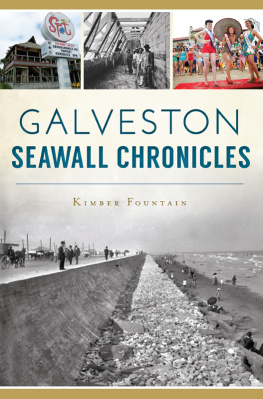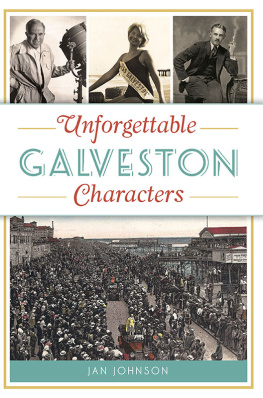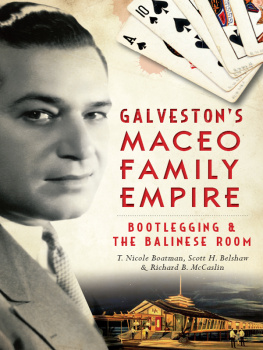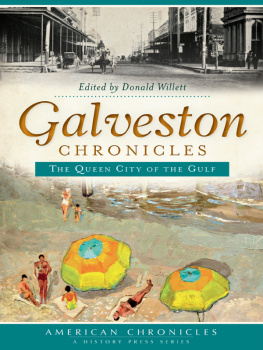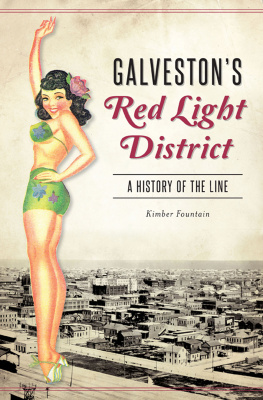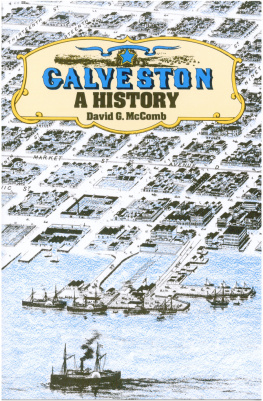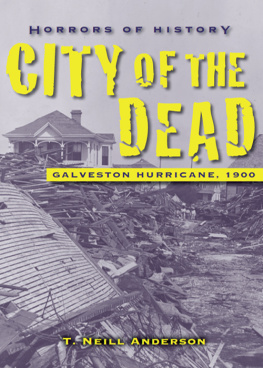Joseph R. Pellerin - Galvestons Tree Carvings
Here you can read online Joseph R. Pellerin - Galvestons Tree Carvings full text of the book (entire story) in english for free. Download pdf and epub, get meaning, cover and reviews about this ebook. year: 2015, publisher: Arcadia Publishing Inc., genre: Children. Description of the work, (preface) as well as reviews are available. Best literature library LitArk.com created for fans of good reading and offers a wide selection of genres:
Romance novel
Science fiction
Adventure
Detective
Science
History
Home and family
Prose
Art
Politics
Computer
Non-fiction
Religion
Business
Children
Humor
Choose a favorite category and find really read worthwhile books. Enjoy immersion in the world of imagination, feel the emotions of the characters or learn something new for yourself, make an fascinating discovery.

- Book:Galvestons Tree Carvings
- Author:
- Publisher:Arcadia Publishing Inc.
- Genre:
- Year:2015
- Rating:3 / 5
- Favourites:Add to favourites
- Your mark:
- 60
- 1
- 2
- 3
- 4
- 5
Galvestons Tree Carvings: summary, description and annotation
We offer to read an annotation, description, summary or preface (depends on what the author of the book "Galvestons Tree Carvings" wrote himself). If you haven't found the necessary information about the book — write in the comments, we will try to find it.
On September 13, 2008, Hurricane Ike made landfall in Galveston with a 12-foot storm surge that flooded most of the island. The salt water then killed between 40,000 and 50,000 trees in Galveston. After they died, the trees were cut down. A local citizen made the suggestion to carve the stumps into sculptures. Three different professional artists and one amateur artist carved all of the carvings on the island. The first carving was completed in 2009, and the stumps continue to be carved as of 2014. They have become a must-see tourist attraction in Galveston.
Galvestons Tree Carvings — read online for free the complete book (whole text) full work
Below is the text of the book, divided by pages. System saving the place of the last page read, allows you to conveniently read the book "Galvestons Tree Carvings" online for free, without having to search again every time where you left off. Put a bookmark, and you can go to the page where you finished reading at any time.
Font size:
Interval:
Bookmark:
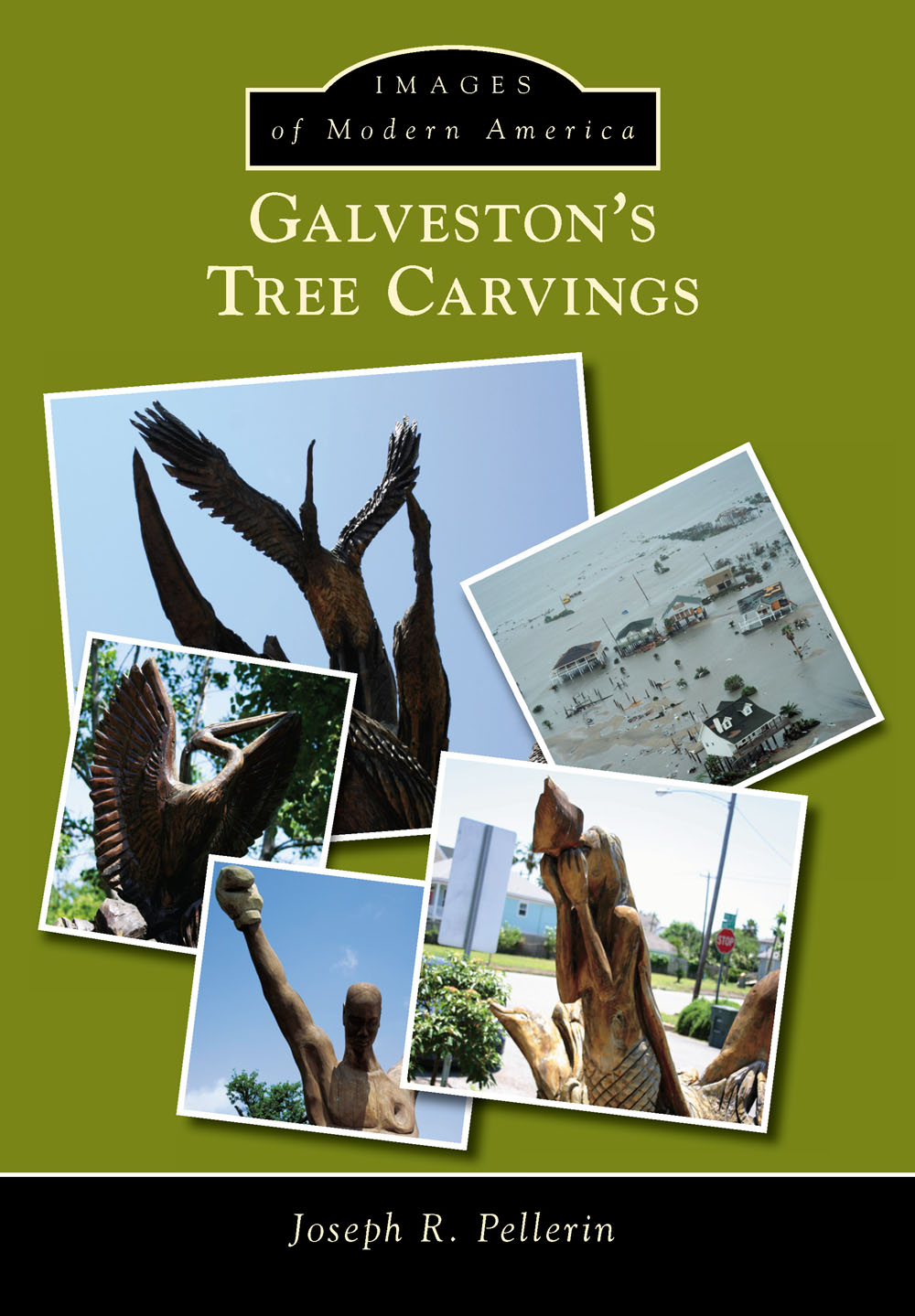
IMAGES
of Modern America
GALVESTONS
TREE CARVINGS
ON THE FRONT COVER: Clockwise from top left:
The Birds of Galveston by Dayle Lewis (Authors collection; see ).
ON THE BACK COVER: From left to right:
Grandmother Reading to Her Grandchildren by Earl Jones (Authors collection; see ).
IMAGES
of Modern America
GALVESTONS
TREE CARVINGS
Joseph R. Pellerin

Copyright 2015 by Joseph R. Pellerin
ISBN 978-1-4671-3305-0
Ebook ISBN 9781439649541
Published by Arcadia Publishing
Charleston, South Carolina
Library of Congress Control Number: 2014957780
For all general information, please contact Arcadia Publishing:
Telephone 843-853-2070
Fax 843-853-0044
E-mail
For customer service and orders:
Toll-Free 1-888-313-2665
Visit us on the Internet at www.arcadiapublishing.com
This book is dedicated to my parents, Joe and Rita Pellerin, and the people of Galveston, who will always stay and rebuild.
CONTENTS
ACKNOWLEDGMENTS
The author acknowledges and thanks Arcadia Publishing for making this book possible. Also, Donna Leibbert for suggesting the carvings, the homeowners for commissioning them, the artists Dayle Lewis, Jim Phillips, and Earl Jones for carving them, and the Galveston Island Tree Conservancy (GITC) for planting more than 8,000 trees since Hurricane Ike through its Re-Green Galveston program.
For more information on the GITCs replanting efforts, visit www.galvestonislandtreeconservancy.org. Donations for future carvings or the replanting of trees can be mailed to:
GITC
PO Box 2123
Galveston, TX 77553
Please specify if the donation is to be used for carvings or replanting.
Unless otherwise noted, all images appear courtesy of the author.
INTRODUCTION
My name is Joseph Pellerin, and I am a third-generation Galvestonian, or, as we say in Galveston, a BOI (born on the island). I teach American history part time at San Jacinto College in Pasadena, Texas, but I operate a sightseeing tour business, Galveston Historic Tour, as my full-time job. The tree carvings are included on my tour, and several of my guests asked me if there was a book on them. When I mentioned there was not, they suggested there should be. I thought that was great idea, so here we are. First, some background on the area is needed. Galveston is a sand barrier island that nature created to protect the Texas Gulf Coast from hurricanes. However, as it was the deepest natural harbor in the state, Michel Menard thought it a great place to establish a city. The city of Galveston was chartered in 1839. Being a sand barrier island, Galveston has had its fair share of hurricanes, with the worst occurring in 1900, known locally as the Great Storm or Great Hurricane of 1900. To date, it remains the worst natural disaster in the history of the United States, and an estimated 6,000 people were killed in Galveston alone. Following the disaster, many people stayed and helped rebuild the city, and two improvements were made. One was the addition of a 17-foot-high, 3-mile-long seawall along the gulf side of the island. After three extensions, the current seawall is roughly 10 miles long. The second improvement was the grade raising. The city dredged Galveston Bay and filled in the city. The grade raising begins at the seawall, matching its height at 17 feet. There is then a gradual slope down that runs south to north. Since the construction of the seawall, hurricane storm surges coming from the gulf have been thwarted by the seawall. However, with nothing to protect the bay side, the flooding has come from there. This what happened during every hurricane since 1900, including the 1915 hurricane, Hurricane Carla in 1961, Hurricane Alicia in 1983, and Hurricane Ike in 2008, which brings us to the tree carvings.
The Saffir-Simpson wind scale measures the strength of hurricanes based on their wind speed on a scale of one to five, with five being the strongest. Hurricane Ike in 2008 was a Category 2 with 110-mile-per-hour sustained winds. However, it brought with it a massive storm surge of 12 feet. This was well above average for a Category 2 hurricane. Just as with every hurricane since 1915, the seawall stopped the surge from the Gulf of Mexico, but there was nothing to stop it from Galveston Bay. As a result, downtown Galveston, also known as the Strand District, got the worst flooding (roughly eight feet). The water level then decreased as it approached the seawall since the island becomes higher when traveling that direction, so the water level was only around six inches right behind the seawall. When it comes to saltwater, though, six inches is a bad as six feet. Because of the massive size of Ike, flooding began about 14 hours before the eye of the hurricane made landfall. From the time Ike arrived to the time it left, most of Galvestons trees were sitting in saltwater for over 24 hours. Many of the trees, especially the oaks, could not tolerate of any amount of salt. After this saltwater bath, between 40,000 and 50,000 trees died where they stood. A large number of the oak trees were over 100 years old.
The trees were evaluated by the Texas Forest Service and the US Forest Service. By the spring of 2009, it was clear the trees were not coming back. Once a tree was determined to be dead, it was sprayed-painted with an orange X by the city and later cut down. Much of the wood was turned into lumber or furniture or was sold to artists to be turned into wood carvings. Some of the oak made its way to the Mystic Seaport Museum in Connecticut, where it was used to restore the frame of the Charles W. Morgan, Americas only surviving wooden whale ship. However, the loss of the trees added to the devastation suffered by Galvestons citizens following Ike. Donna Leibbert, a member of the Galveston Island Tree Conservancy, travelled to Biloxi, Mississippi, and saw trees killed by Hurricane Katrina turned into carvings. Inspired, Donna proposed the same idea for Galvestons dead trees to the city council. Once liability issues were resolved, the city allowed trees on easements to be carved, and it even commissioned two carvings for city hall next to the Central Fire Station and one carving each in four of the city parks. Houston artist Jim Phillips completed the first two carvings (a fire hydrant and a Dalmatian) in August 2009. Soon, the idea caught on, and new carvings started to pop up all over town. In fact, there are still stumps being carved. Jim Phillips carved the latest addition in February 2014.
One
THE CITY IN RUINS
Although Galveston lies in the path of many hurricanes, the resiliency of its citizens never ceases to amaze. Through the greatest natural disaster in Americas history and numerous hurricanes and tropical storms, the citizens of Galveston have always stayed and rebuilt. Indianola, Texas, was a prosperous port city of more than 5,000 residents when a major hurricane in 1875 devastated the community. The citizens rebuilt the town on a smaller scale; however, it was promptly obliterated by a second major hurricane on August 20, 1886. After the second storm, the city was abandoned. The Great Hurricane of 1900 could have caused Galveston to go the way of Indianola, but it did not. The Great Storm is known by various names, as it occurred before the current tropical storm naming system was established by the National Weather Service. It is still recognized as the deadliest natural disaster in US history, with an estimated death toll of 6,000 people. The roads and bridges were completely demolished, leaving no opportunity for evacuation or rescue in the days to follow. The city was not only rebuilt, it was rebuilt with hurricane defenses. Galveston then redefined itself as the Playground of the Southwest, becoming a tourist destination. The city and its residents went on to survive a more powerful hurricane in 1915, the Category 4 Hurricane Carla in 1961, the Category 3 Hurricane Alicia in 1983, and the Category 2 Hurricane Ike in 2008. Hurricane Ike, much like the Great Hurricane of 1900, was a notable storm. While only clocking in as a Category 2 hurricane with 110-mile-per-hour winds, it was a massive storm. Gale-force winds reached 275 miles away from the eye, and hurricane-force winds extended out 120 miles from the eye. The eye at one time was 60 miles across and then shrank to 30 miles across as it made landfall. The huge wind field caused Ikes storm surge. The sheer size of Ike and its high winds allowed it to push an immense amount of water into the coast of Texas. In fact, it pushed a larger amount of water than a normal-sized Category 2 hurricane would have. This was a Texas-sized storm, though. A storm surge of between 10 and 20 feet ripped through areas surrounding Galveston Bay, and the flooding knocked out water service, electricity, and roadways in Galveston for weeks after the storm. Hurricane Ike ranks as the third-costliest hurricane in American historybehind Hurricanes Katrina (2005) and Sandy (2012)with over $30 billion in damage. However, despite the devastation, the citizens of Galveston once again came together to rebuild, and even improve, their city. As a phoenix rises from the ashes, some of the trees killed by Hurricane Ikes massive saltwater storm surge rose from mere stumps to beautiful works of art that are now a major tourist attraction.
Next pageFont size:
Interval:
Bookmark:
Similar books «Galvestons Tree Carvings»
Look at similar books to Galvestons Tree Carvings. We have selected literature similar in name and meaning in the hope of providing readers with more options to find new, interesting, not yet read works.
Discussion, reviews of the book Galvestons Tree Carvings and just readers' own opinions. Leave your comments, write what you think about the work, its meaning or the main characters. Specify what exactly you liked and what you didn't like, and why you think so.

